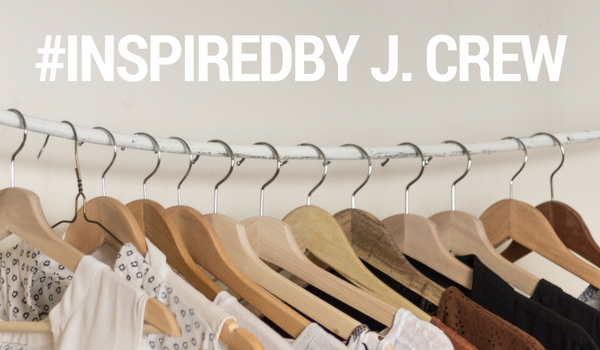
Every once and a while, an ad catches my attention. Once, it was a Bears billboard that got me excited for the season; a while ago, it was an Esurance ad on Spotify; and yesterday, it was a J. Crew ad at a bus stop.
The ad was simple in design—two models in engaging poses against a white background—but the copy is what made it stand out to me. At the top of the ad was J. Crew and at the bottom was the phrase, “Our clothes, your style.” I was so struck by the sentiment, I stopped on the sidewalk and considered the ad.
Simplicity
The ad is stipped down to the most essential elements: company name, product, and tagline. Nothing unnecessary was included. The focus was solely on what J. Crew was selling, both its product and its name. If one of the three elements had been inferior, the ad wouldn’t have made an impression, or at least not a significant one—all three elements work seperately and then come together.
Audience-Centric
The ad is actually more focused on the person viewing the ad than one might think. When looking top to bottom—J. Crew, models, “Our clothes, your style”—the ad ends with a concentration on the reader (“your style”), bringing the attention back to the reader themselves. As soon as I was done looking at the ad for the first time, I immediately returned my gaze to the models to see how my style might be better embodied with J. Crew’s clothes.
Resonating
As I stood looking at the ad, I tried to figure out what about the ad made it so compelling. And it was the focus on me, the consumer. J. Crew wasn’t telling me to buy into their idea of what style or fashion is; they were inviting me to use their clothes as a conduit for finding my style, my own place in the fashion world. I couldn’t think of a time when another brand was so open about how regular people buy clothes, or at least how I buy clothes: rarely do I purchase a full cordinated, mannequin-approved outfit from one location; I mix and match and buy pieces I feel comfortable in. As I continued on my walk past the bus stop, I felt like, at least for now, J. Crew understood me.
When developing advertisements—whether on billboards, social media, or print—it’s important to think about how it will be received.
- Is it as simple and easy to comprehend as possible? You don’t want your audience to have to waste valuable time interpreting the ad when they could be concentrating on your message.
- Is it focusing on the audience you’re trying to reach? Helping your ideal buyer persona see themselves buying your product or purchasing your service is key to a good ad.
- Will the ad resonate? A great ad will connect with the audience on an emotional level, creating a deeper connection that is more memorable in the long run.
The proof that this ad is valuable is in this blog post: less than 24 hours after seeing the ad, I had to write about how good it was and how others could learn from it. Make sure your ads—and company and product or service—are so good that someone wants to tell others about them.
{{cta(’09d17f80-c7dc-4320-b2ab-022b46a82d04′)}}
